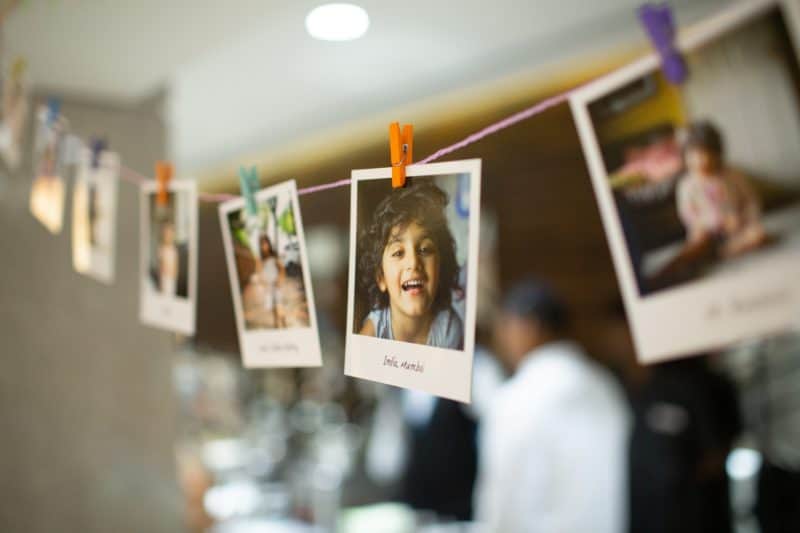Children grow up quickly; before you know it, the kids are already attending college and starting their own families. And parents want to remember every moment from their happy childhood and growing up with their children, every holiday and every milestone in development – the first tooth, the first step, the first meter on a bicycle.
We often return to precious memories from childhood to better understand our real selves or to feel the feelings we experienced then, sometimes even to draw inspiration. A happy childhood is a powerful force that supports, inspires, and gives strength in different life periods. Young children may not remember the chronology of events, but they will clearly remember what emotions they experienced at that moment. Therefore, childhood memories so vivid and full of impressions will serve as a basis for the children to look at the world around them.
It will largely depend on the parents whether these memories will bring joy to the child or desire to delete them from memory forever. Parents can place accents and teach the child to see the good, to notice the pleasant, and to fix the unusual. Psychologists advise parents to make a material database of memories. This will help the child return to happy events, remember interesting moments and realize their uniqueness. Let’s talk about these ways to create a database of memories.
1. Photos

Collect baby photos from different months and years and make a collage. For decoration, use magazine clippings and child’s drawings, and come up with or pick up funny or touching captions for photographs. Make a collage, put it in a frame and hang it on the wall in the living room – the child will be pleased.
Make not only children’s but also family photo albums “How our year went.” So you can make a whole family story in photographs. Maybe albums have already gone out of fashion, but nothing conveys the spirit of the event like the crunch of album sheets and old photographs stuck together from time to time. However, if you are a fan of modern solutions, then you can use the Chatbooks app to collect photo memories into something aesthetic.
The photos you will use for the photo collage and the photo album may be of different quality. A parenting blog can also be a good idea for your online diary and your children’s storehouse of childhood memories. These can be photos taken on your smartphone (thanks to modern technology – everyone has a fairly high-quality camera on their phone today). And you can also organize annual photo sessions with a professional camera – this can become a great tradition.
2. Compilation Videos
Today we shoot many videos of children: their first steps, everyday life of growing up and solemn events. You can make videos from all these video clips and photos showing how the child grew up and changed. It will be especially interesting to watch them if parents create thematic compilation videos and use Canva photo editor to revive and refresh photos.
For example, you can entrust the camera to children. Let them become operators for a while. Prepare a list of questions and ask them to interview all family members.
Or interview each child’s birthday. Make a short questionnaire for the child, and record the answers on the video.
Create films about trips and family holidays. Create your family biopic with the help of Movavi Video Editor. It will be treasured for centuries and passed down from generation to generation.
Shooting videos every day/week/month might be a great idea, as you can make a video compilation to see how the baby grew up.
3. Baby Books
A special album or book – Baby Book – where you can write all the baby’s milestones. As a rule, they save data on weight and height, teeth, first attempts to crawl, sit or stand – all the baby growth charts. You can keep it like a diary, describing every day of the life of the crumbs. Both a regular notebook and specially created albums are suitable for these purposes.
4. Family History
Before bed, tell your children family stories. What happened to you when you were so small? What was your grandmother like when she was young? Don’t throw away family items. Create a separate area for them. Save awards, letters, and diplomas. Place the brightest on the walls. If you still have old letters, and notes, do not leave them gathering dust in boxes; start creating a family album of memories with all the notes, messages, and postcards.
5. Letters to the Future
Sometimes high parent involvement can lead to an experience of mixed feelings of pride and longing when they see how quickly their children grow up, set goals and reach new heights. But time flies, and it doesn’t always work out the way we plan. Paper and a pen will help stop the passage of time a little. Sit down and write your child a letter to the future. This is one of the most difficult and, at the same time, powerful ways to tell a child about your love, feelings and experiences. Another option is to invite children to write a letter to read in the future; you can even have several letters for each period of their growing up.
6. Voice Recordings
Imagine how a mother’s voice can sometimes soothe a child in the womb, and adult children find peace and tranquillity when they hear a parent’s voice. It would be a great idea to keep an audio diary, write future messages to your children, or record their voice’s development from the first words to adulthood. These audio memories can be created with SpeakPipe and even shared via a link you could share with loved ones via email or social media.
7. Creative Memories

Do not throw away children’s crafts and drawings; collect a herbarium with children and put them between the pages of books. To better preserve such memories, create an album for drawings, and take a separate box for crafts, ensuring safety in case the family moves. If you want to digitize all these memories, keep all your files in one place, like Dropbox, whether they’re backups from computers, photo albums, or thousands of documents.
Another sweet memory of how your baby grew and changed can become an unusual interior decoration. Special velvet paint or airy clay will firmly preserve the outlines of small heels and fingers. Casts of little feet and hands can be made yearly and become a family tradition.
If needlework is not alien to you, you can create a patchwork quilt from baby clothes or baby t-shirts if you are older.
Deep, so-called “shadow” frames for decorating bulky items can be turned into memorabilia by filling it with a collection of cars or tiny toys made of chocolate eggs or other children’s “treasures”. At least you’ll stop stepping on them.
Conclusion
Be together and create family traditions. Celebrate birthdays, and memorable dates, give gifts to each other and try to сreate as much family time as possible. Plant trees. Take your children to memorable places: to the maternity hospital where you were born, to the house where you used to live, where you received a marriage proposal from their dad. Tell them your story, which is part of their life too. Only in this way will you teach your children to keep and appreciate family memories that unite and remind you that you are one.

